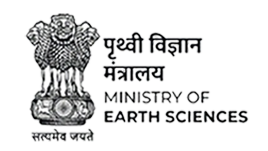









| Abstract Submission No. | ABS-04-0049 |
| Title of Abstract | "Unravelling CDOM Dynamics and Source Attribution in a Tropical Monsoon Lagoon: Implications for Ecosystem Functioning" |
| Authors | Sambit Singh*, Tamoghna Acharyya, Anu Gopinath |
| Organisation | Kerala University of Fisheries and Ocean Studies (KUFOS) |
| Address | Centre for Marine Living Resources & Ecology Ministry of Earth Sciences Atal Bhavan, Puthuvype , Kochi, India Pincode: 682508 E-mail: sambitsinghjspur@gmail.com |
| Country | India |
| Presentation | Poster |
| Abstract | Coloured dissolved organic matter (CDOM) is the optically measurable component of dissolved organic matter in water. These molecules are primarily leached from decaying detritus and organic matter. CDOM dynamics is expected to be highly variable due to the biogeochemical complexity of the study region and the season. CDOM are gaining greater attention for their photochemistry and photobiology activity in aquatic ecosystem by absorbing the ultraviolet (UV) and short-wavelength blue portions of the light. CDOM studies have mainly focused on coastal and offshore waters, whereas our understanding of their dynamics in tropical inland water bodies is relatively scarce. To bridge this knowledge gap, a monthly in situ investigation was carried out at 33 stations along a monsoon driven lagoon, Chilika, on the southeast coast of India for one year i.e., from July 2018 to June 2019. CDOM absorption at 440 nm [aCDOM (440)] data were analyzed as a proxy for CDOM concentration which varied between a range of 0.001 ¿ 65.14 m-1 with average values ranging between 1.70±2.67 m-1 and 3.76±5.55 m-1. A strong gradient in aCDOM(440) was observed from river discharge dominated shallower northern sector (4.9±8.33) to the more isolated and less fresh water influenced deeper southern sector (1.23±1.55). Spectral slope (S), spectral slope ratio (SR), and average molecular weight) (M), were computed to understand the possible source and fate of CDOM in the lagoon. The average spectral slope of S280−500 and S350−500 were found to vary between 0.002-0.096 nm−1and 0.001-0.095 nm−1, respectively. The (SR) and (M)-values were found to vary between a range of 0.01-7.81 and 0.31-52.28. It was observed that large-sized, high molecular weight CDOM from terrestrial origin was prevalent during monsoon with lower (S), (SR), and (M)-values. In contrast, lesser weight CDOM fractions were prevalent during pre- and post-monsoon, mainly of autochthonous origin with higher (S), (SR), and (M)-values. Our results suggest the presence of a strong a spatio-temporal heterogeneity in the CDOM absorbance in Chilika that varies with monsoon driven freshwater input and interaction of fresh, brackish, and marine water continuum besides in situ modification of CDOM due to microbial degradation and precipitation. |
| Keywords | aCDOM(440) , Chilika Lagoon, Monsoon, M-value, Spectral Slope, Spatio-temporal |
| For Awards | yes |